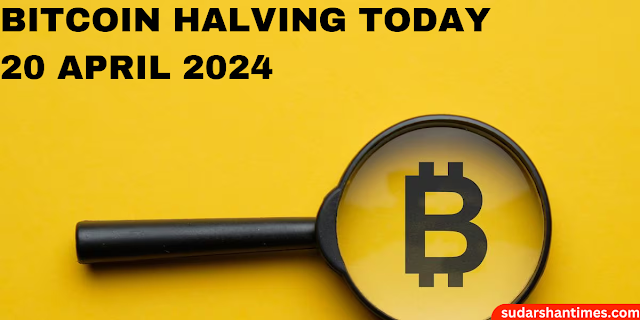The world of cryptocurrencies is abuzz with anticipation as Bitcoin, the pioneering digital asset, inches closer to its next highly anticipated halving event. Scheduled to occur in April 2024, this milestone is a testament to Bitcoin's ingenious design and its unwavering commitment to scarcity and deflationary principles.
Content :-
- Understanding Bitcoin Block & Mining Rewards
- The Halving Mechanism
- Impact On Miners & Network Security
- Historic Mining Effects
- Bitcoin's Deflationary Ethos
- Next Mining Event
- Conclusion
Understanding Bitcoin Blocks and Mining Rewards
At the heart of Bitcoin's operation lies a decentralized network of miners, who contribute their computing power to validate transactions and secure the blockchain. As a reward for their efforts, miners receive newly minted bitcoins, a process known as mining.
Bitcoin's blockchain is divided into blocks, with each block containing a specific number of transactions. Currently, miners receive a block reward of 6.25 bitcoins for every block they successfully mine and add to the blockchain. However, this reward is not static; it is programmed to halve at fixed intervals, approximately every four years.
The Halving Mechanism: Enforcing Scarcity
Bitcoin's halving mechanism is a critical component of its deflationary design, ensuring that the total supply of bitcoins remains finite. With each halving event, the rate at which new bitcoins are introduced into circulation is reduced by 50%.
The first halving occurred in November 2012, when the block reward was reduced from 50 bitcoins to 25 bitcoins. The second halving took place in July 2016, further decreasing the block reward to 12.5 bitcoins. The upcoming halving in May 2024 will see the block reward slashed from 6.25 bitcoins to 3.125 bitcoins.
Impact on Miners and Network Security
While the halving event is celebrated as a testament to Bitcoin's scarcity, it also poses significant challenges for miners. With the block reward being cut in half, miners will effectively see their revenue from mining activities reduced by 50%.
This reduction in revenue could lead to a potential shakeout in the mining industry, as less efficient and less profitable mining operations may be forced to shut down. However, this process is expected to be a natural culling of the herd, leaving only the most efficient and competitive miners in operation.
Additionally, the halving event could temporarily impact the network's overall hash rate, which is a measure of the computational power dedicated to mining Bitcoin. A lower hash rate could potentially make the network more vulnerable to attacks, albeit temporarily, until the mining difficulty adjusts to compensate for the reduced hash rate.
Historical Price Movements and Market Speculation
Historically, Bitcoin's price has exhibited significant volatility in the lead-up to and aftermath of halving events. The anticipation of reduced supply, coupled with speculative demand from investors, has often fueled price rallies in the months preceding and following a halving.
For instance, the 2012 halving was followed by a remarkable price surge, with Bitcoin's value climbing from around $12 to over $1,000 within a year. Similarly, the 2016 halving preceded a bull run that saw Bitcoin's price soar from around $600 to nearly $20,000 by the end of 2017.
However, it's crucial to note that past performance does not guarantee future results, and the market's reaction to the 2024 halving could be influenced by a multitude of factors, including regulatory developments, institutional adoption, and overall market sentiment.
The Bigger Picture: Bitcoin's Deflationary Ethos
Beyond the technical intricacies and market dynamics, Bitcoin's halving event serves as a powerful reminder of the digital asset's deflationary ethos. With a hard-coded maximum supply of 21 million bitcoins, the halving mechanism ensures that the rate of new bitcoin issuance decreases over time, fostering scarcity and potentially increasing the asset's perceived value.
As the world grapples with inflationary pressures and the debasement of fiat currencies, Bitcoin's deflationary design has garnered attention as a potential hedge against these macroeconomic forces. The halving event reinforces Bitcoin's position as a unique and innovative asset class, challenging traditional notions of money and value.
As the countdown to the 2024 halving event continues, the cryptocurrency community eagerly awaits the unfolding of this pivotal moment in Bitcoin's history. Whether the halving sparks a new era of price appreciation or ushers in a period of market uncertainty, one thing is certain: Bitcoin's deflationary principles remain unwavering, solidifying its status as a trailblazer in the realm of digital finance.

